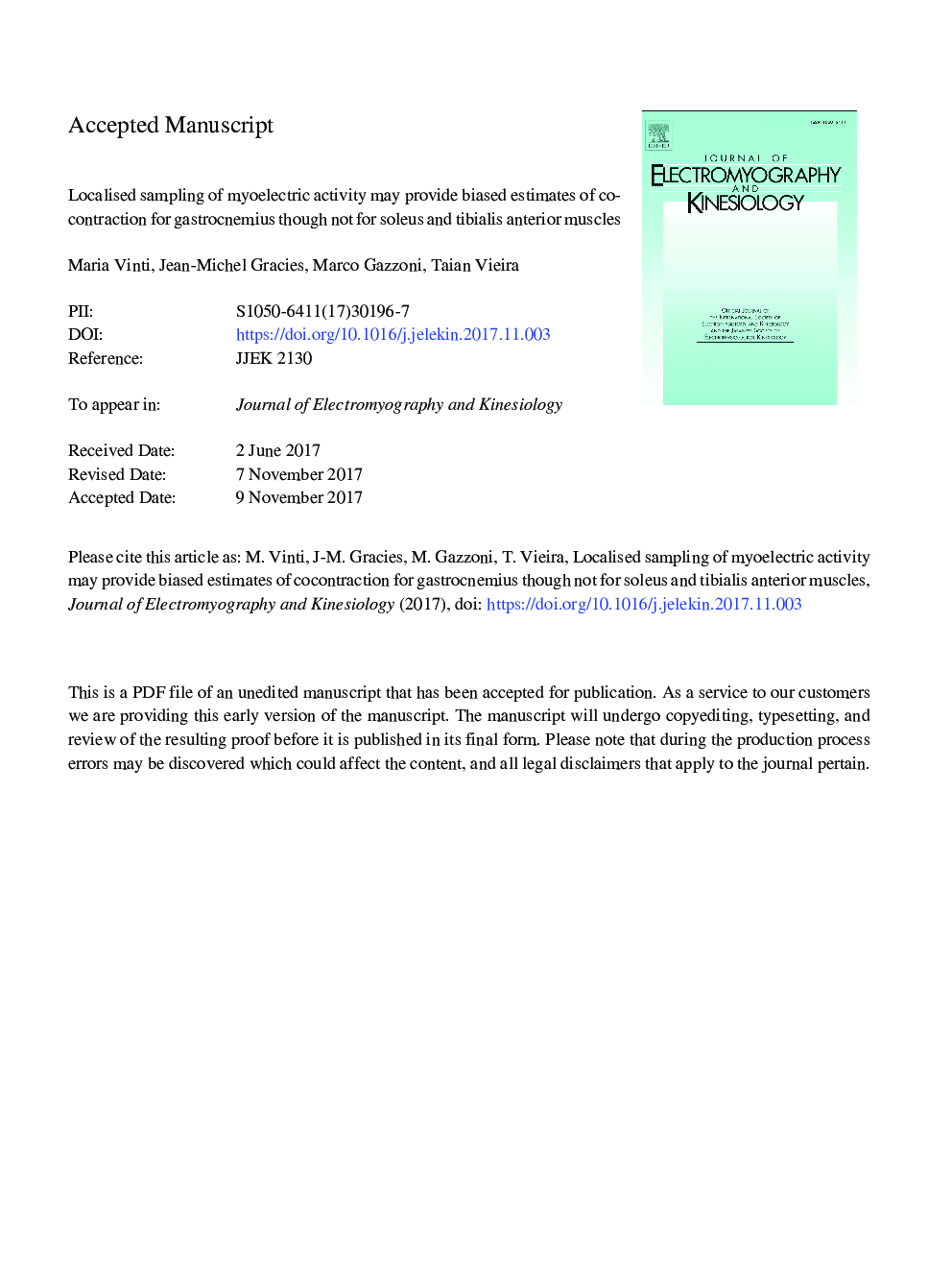| Article ID | Journal | Published Year | Pages | File Type |
|---|---|---|---|---|
| 8799809 | Journal of Electromyography and Kinesiology | 2018 | 33 Pages |
Abstract
Proper muscle activity quantification is highly relevant to monitor and treat spastic cocontraction. As activity may distribute unevenly within muscle volumes, particularly for pennate calf muscles, surface electromyograms (EMGs) detected by traditional bipolar montage may provide biased estimations of muscle activity. We compared cocontraction estimates obtained using bipolar vs grids of electrodes (high-density EMG, HD-EMG). EMGs were collected from medial gastrocnemius, soleus and tibialis anterior during isometric plantar and dorsi-flexion efforts at three levels (30%, 70% and 100% MVC), knee flexed and extended. Cocontraction index (CCI) was estimated separately for each electrode pair in the grid. While soleus and tibialis anterior CCI estimates did not depend on the detection system considered, for gastrocnemius bipolar electrodes provided larger cocontraction estimates than HD-EMG at highest effort levels, at both knee angles (ANOVA; Pâ¯<â¯.001). Interestingly, HD-EMG detected greater gastrocnemius EMGs distally during plantar flexions, and greater CCI values proximally during dorsiflexions. These results suggest that bipolar electrodes: (i) provide reliable estimates of soleus and tibialis anterior cocontraction; (ii) may under-or overestimate gastrocnemius cocontraction, depending on their distal or proximal position.
Related Topics
Health Sciences
Medicine and Dentistry
Orthopedics, Sports Medicine and Rehabilitation
Authors
Maria Vinti, Jean-Michel Gracies, Marco Gazzoni, Taian Vieira,
